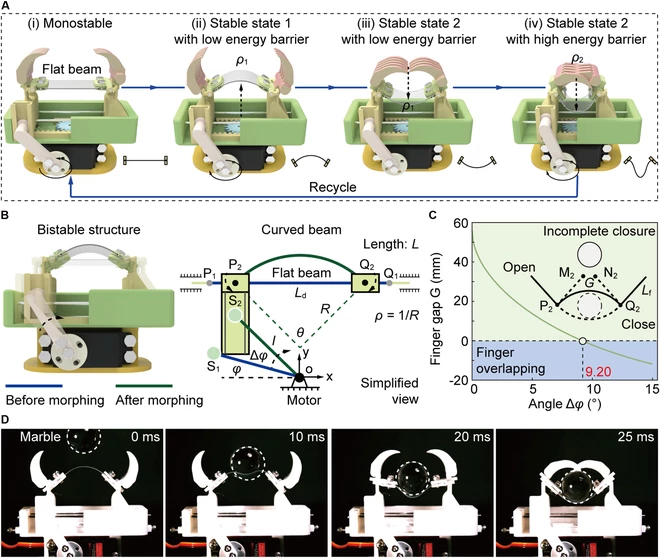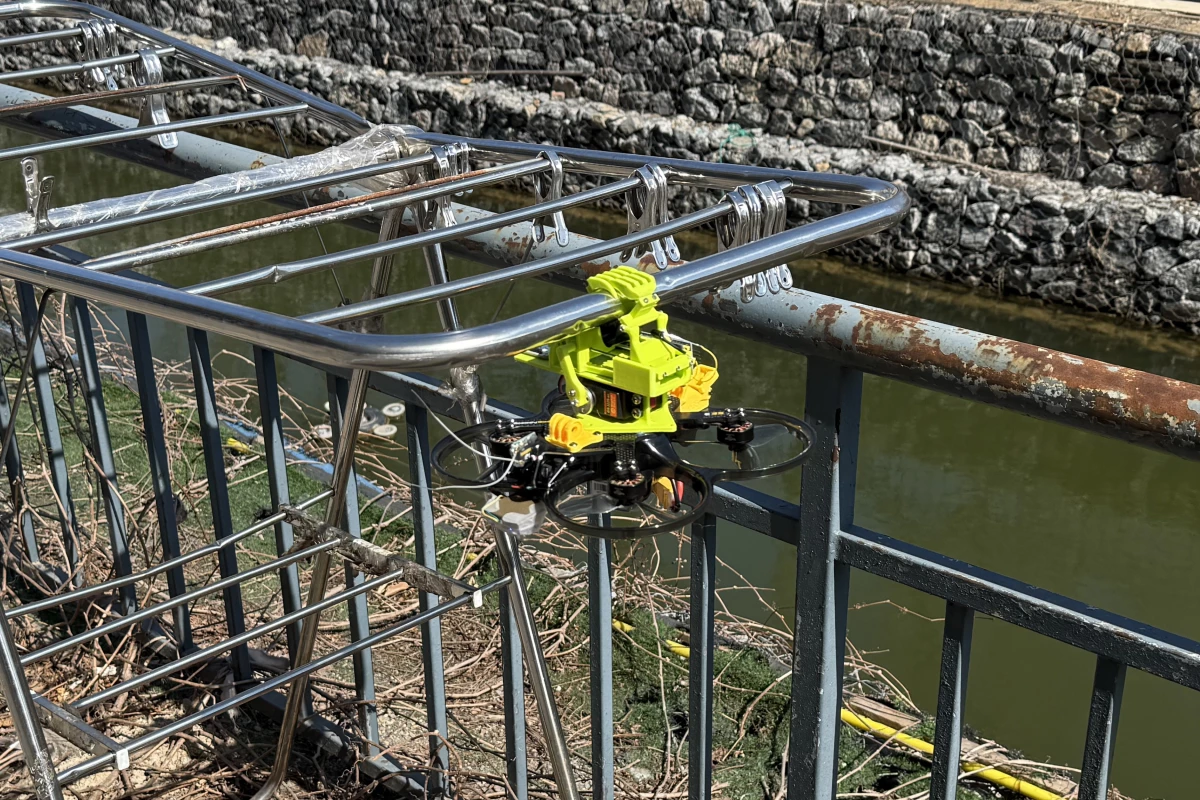For some time now, we've been hearing about "bistable" devices that can remain in either of two states without expending any energy. A new one, inspired by plant seed pods, takes the form of a robotic gripper which is strong yet easily activated.
Putting it simply, bistable devices are tensioned gadgets that are capable of switching between two stable states, yet they require no power to remain in either of those states.
Metal hair clips are a good everyday example, although we've also seen the technology utilized in things like mini mechanical manta rays, flat-packable structural tubes, and non-powered robotic grippers that grasp objects upon contact.
When it comes to the latter, you don't want to have to apply a great deal of pressure in order to trigger the grasping action – this means you want the gripper to have a low "energy barrier."
The problem is, bistable devices with low energy barriers typically don't have much strength for holding onto the objects they grasp. In other words, they're likely to lose their grip on heavy objects, or on items that are pulled upon by outside forces.
What's needed is a gripper that has a low energy barrier when initially grasping an object, but that increases its energy barrier once it's holding the item. When it's time to release the object, the energy barrier is lowered again.
With this requirement in mind, a team of Chinese scientists looked to the bistable seed-shooting pods of the impatiens plant.
As long as the seeds in the pods are still immature and not ready for dispersal, the pods maintain a high energy barrier, making them difficult to trigger. Once the seeds have matured, however, that energy barrier lessens. As a result, even the pressure of a raindrop is enough to cause the pods to shoot the seeds out onto the surrounding soil.

The impatiens-pod-inspired gripper incorporates two grasping "fingers," the bottoms of which are connected to either end of an elastic beam. The two clamps that connect the fingers to the beam are in turn each connected to a rotating motor-driven shaft.
In the gripper's neutral default state, the beam is flat and non-tensioned. When it's time to grasp an object, however, the shafts get rotated, causing the beam to bend slightly upward. This puts it in a tensioned, bistable state with a low energy barrier.
Therefore, when the gripper is placed around an object – and that object presses against the upward-curved beam – it causes the beam to pop into a downward-curved orientation, drawing the fingers in around the object as it does so.
Once this has happened, the shafts are rotated in the opposite direction, causing the beam to bend down even further. This increases its energy barrier, strengthening and securing the gripper's grasp on the item.
In a demonstration of the technology, one of the grippers was installed on the top of a quadcopter drone, allowing the aircraft to hang from tree branches, railings, etc instead of having to hover in place. Although the beam motor used some power when adjusting the beam tension, no power was required to maintain a hold on the items. Such would not be the case with a conventional gripper.

"With its quick response, programmable interaction forces, and simple yet efficient design, our robotic gripper opens new avenues for next-generation robotic systems," says Sun Yat-Sen University's Dr. Jianing Wu, who led the project along with Dalian University of Technology's Dr. Haijun Peng. "This unique mechanism can significantly expand the functionality of robots for diverse applications."
A paper on the study was recently published in the journal Research.
Source: Research via EurekAlert





